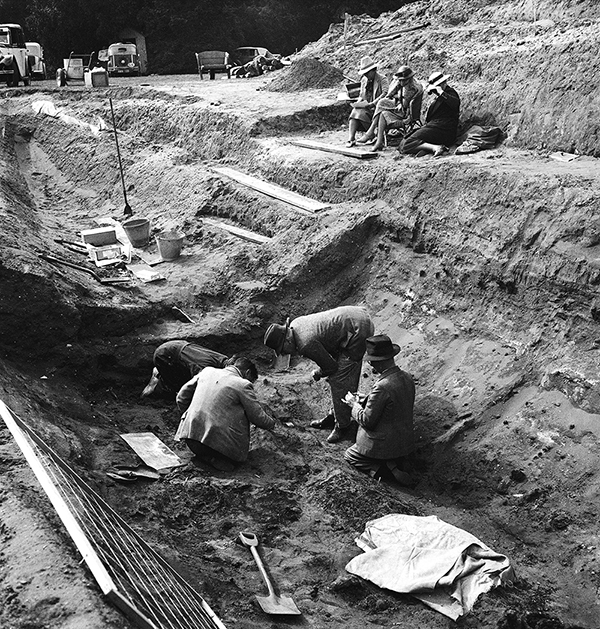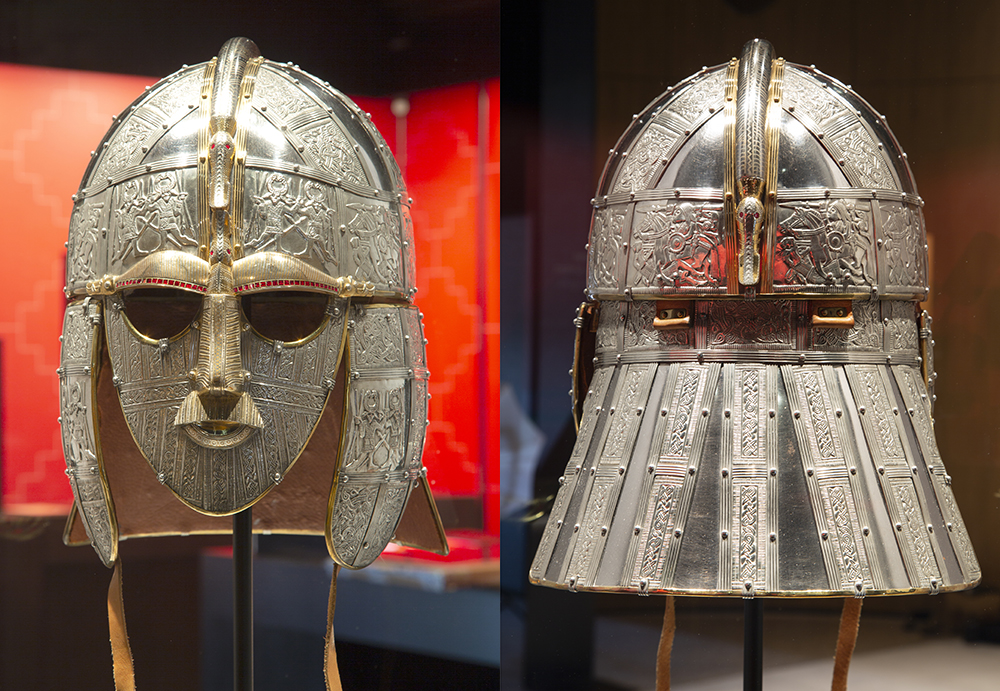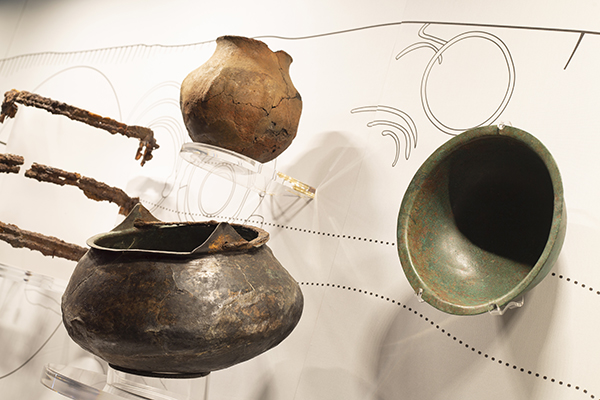The National Trust has transformed Sutton Hoo to offer new ways to experience this incredible story

Mrs Pretty is pictured here at the excavation site in 1939. She is seated in the center on the ridge above the dig. ©Trustees of the British Museum
The £4 million project is the National Trust’s largest ever investment at Sutton Hoo and will include new displays, exhibitions and immersive experiences as well as a new walking route to connect visitors with the wider landscape around the world-famous Royal Burial Ground. The experience for visitors at the site of one of the greatest archaeological discoveries ever made has been transformed at Sutton Hoo in Suffolk, to bring the story of a spectacular King’s ship burial and his treasures to life.
Sutton Hoo, near Woodbridge in Suffolk, is one of the most important archaeological sites in the world and the 7th-century burial mounds, excavated from the late 1930s onwards, have revealed items including the iconic Sutton Hoo helmet that have helped shape our understanding of the origins of English history.
In 1938, local landowner Edith Pretty called in archaeologist Basil Brown to investigate a series of mysterious mounds of earth on her estate near Woodbridge.
What he uncovered the following year, on the eve of the Second World War, made headline news: the 1,300-year old ship burial of a man believed to be 7th century Anglo-Saxon King Rædwald, along with priceless treasures including his helmet, gold belt buckle, sword and shield.
The discovery revolutionized historians’ understanding of the 7th century and revealed that a time previously seen as dark and insular was in fact cultured, sophisticated and vibrant.
Mrs Edith Pretty donated the finds to the British Museum in 1939. The landscape has been cared for by the National Trust since 1998.

A detailed replica of the King’s helmet recovered from the burial site is shown here. ©National Trust/Phil Morley

Some of the items included in the Warrior Horseman’s burial at Sutton Hoo. ©National Trust/Phil Morley.
“It is impossible to overstate the level of excitement that surrounded the discovery of the King’s ship burial in 1939. Nothing of this scale had ever been unearthed in this country before and in a short period of time, this and subsequent excavations have transformed our understanding of the Anglo-Saxons and their world. The significance of the Anglo-Saxons at Sutton Hoo continues to resonate today through our language, law, culture and connections to the landscape. We wanted to create an experience which really does justice to this incredibly important heritage site and we hope our transformation will fire the imaginations of our visitors and help them to feel a part of this story.” –Laura Howarth, Archaeology and Engagement Manager at Sutton Hoo
The significance of the Anglo-Saxons at Sutton Hoo continues to resonate today through our language, law, culture and connections to the landscape.
Within Tranmer House, the focus is the excavations in 1939 and those since, offering visitors the chance to absorb the atmosphere of the discovery as it unfolded, as Edith Pretty, Basil Brown and others faced a race to complete as much as they could before war broke out.
Recorded interviews, vintage projections, extracts of diaries, letters and newspapers, along with photographs of the 1939 dig – including the first color photographs from an archaeological excavation – immerse visitors in the story before they follow a new route from the house to the Royal Burial Ground beyond.
Other single yet important original items will tell their own stories, including in Tranmer House, one of the first ship rivets unearthed, alerting Basil Brown that something significant lay beneath his feet.
In the Exhibition Hall, dramatic new displays will greet visitors, showcasing finely-crafted replicas of the glittering treasures, now in the British Museum, that were buried with the King to accompany his journey into the afterlife.
Original pieces from the later digs will be displayed, such as items from the 1991 excavation which uncovered a warrior and his horse buried alongside bowls and sword, as well as a comb to remind him to stay presentable in the next life.
The Hall will also offer a window on the world of the Anglo-Saxons, through the eyes of various characters, using film, sound and displays to explore their culture, food, trade, rituals and the skilled craftsmanship used to produce the many items discovered.
Later this autumn, the final part of the project, a 17-meter high observation tower, will be opened to offer birds-eye views across the Royal Burial Ground to the wider landscape.
Tranmer House and the Exhibition Hall opened to visitors on Monday August 5.



